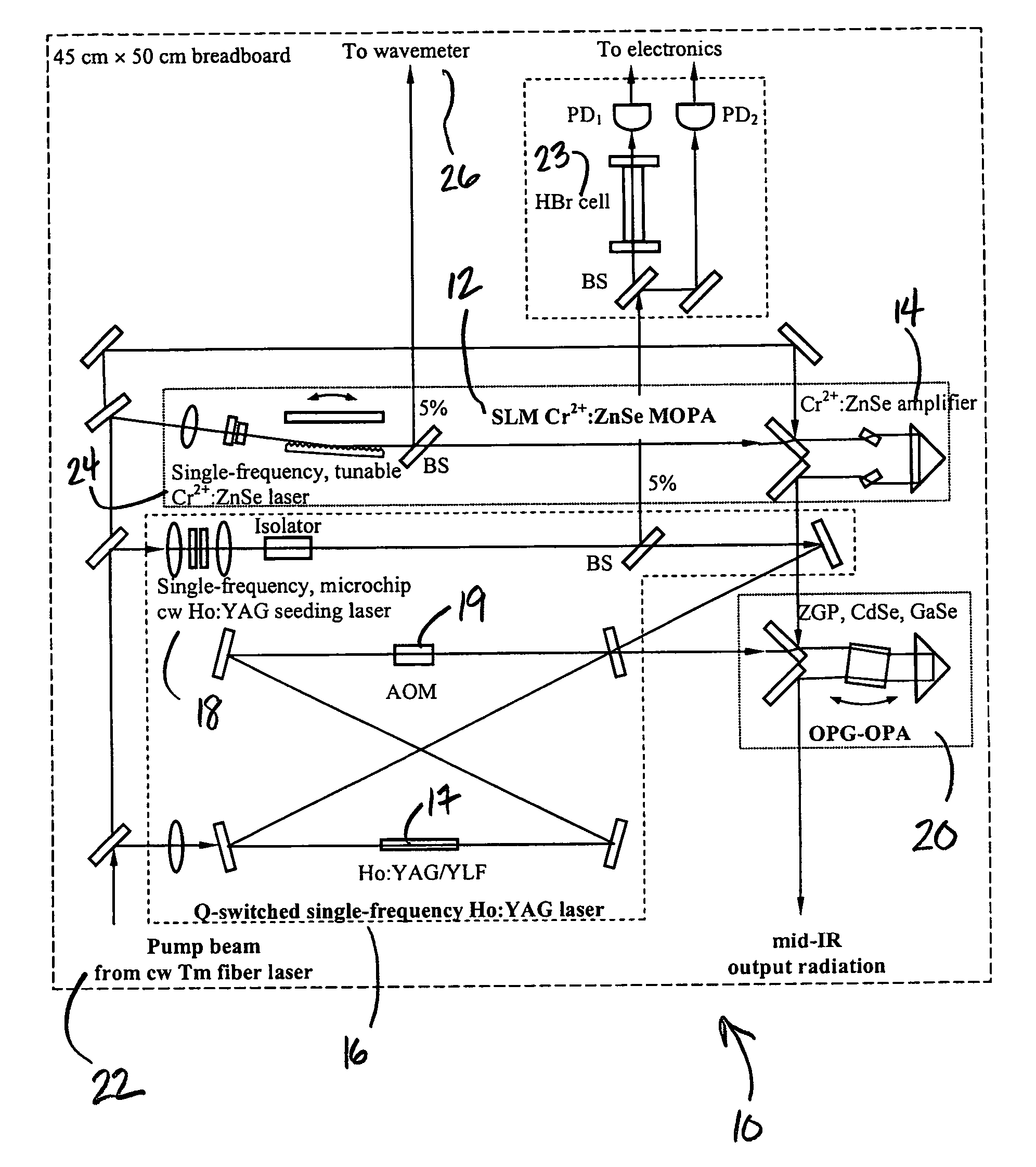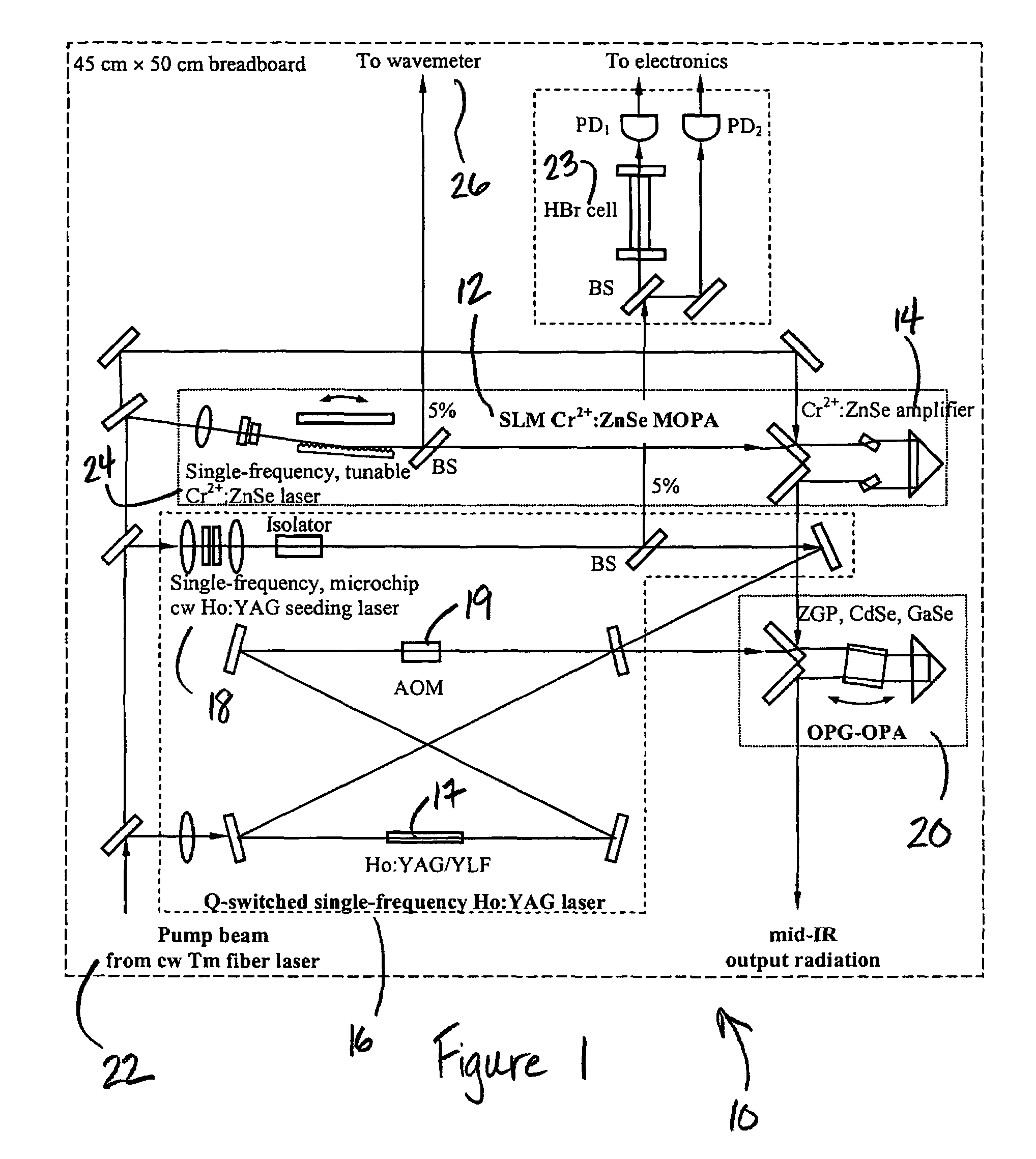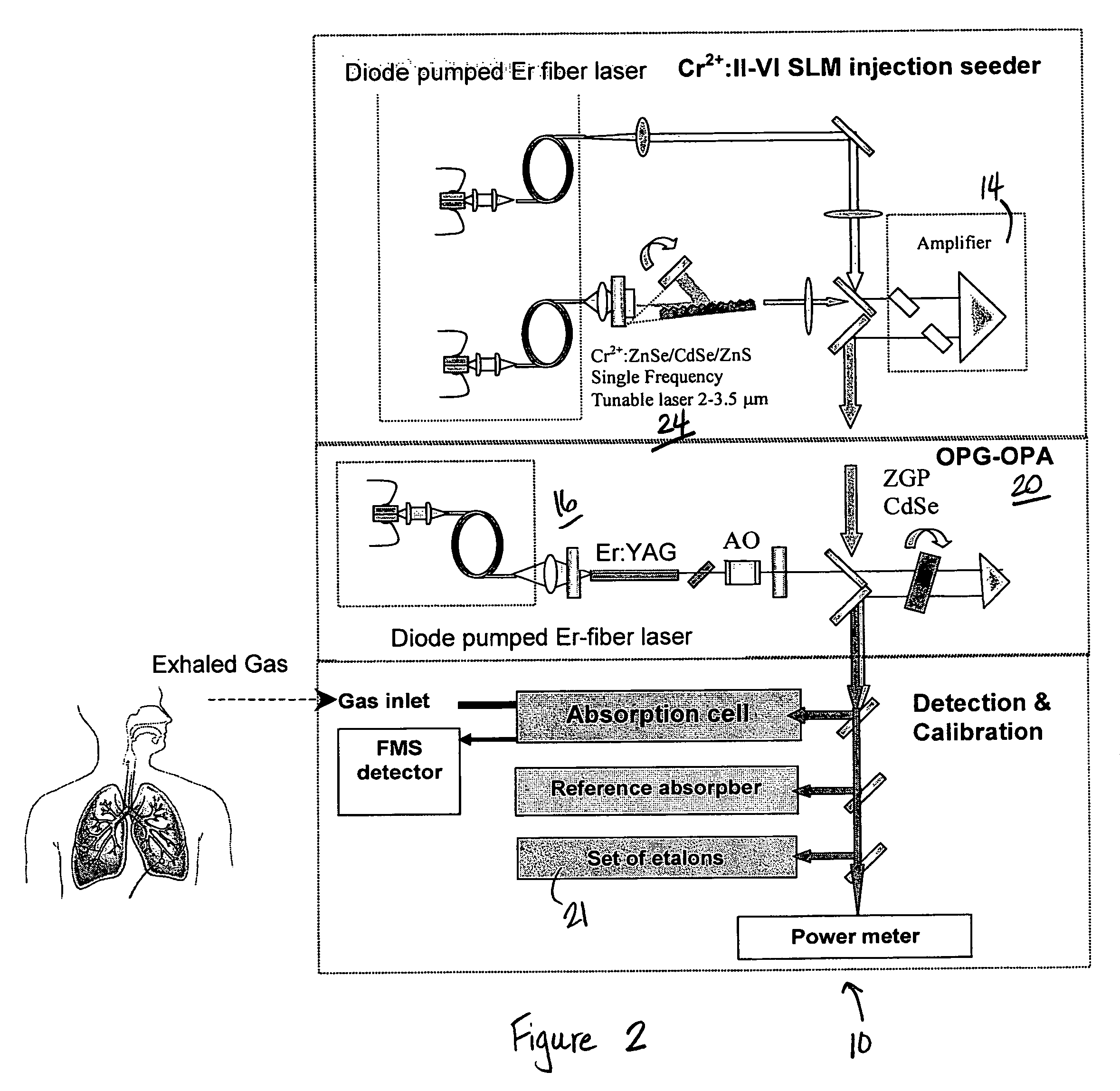Mid-IR instrument for analyzing a gaseous sample and method for using the same
a gaseous sample and mid-ir technology, applied in the field ofquantum electronics, can solve the problems of insensitive or non-specific current screening techniques, such as chest ct scanning, sputum cytology and chest radiology, and cannot be used in the current screening technique, and the substantial potential of mid-ir optical detection of molecules cannot be realized with any of the currently existing laser sources and detection techniques. , the selectivity and speed are inacceptably low
- Summary
- Abstract
- Description
- Claims
- Application Information
AI Technical Summary
Benefits of technology
Problems solved by technology
Method used
Image
Examples
Embodiment Construction
[0038]Looking to FIGS. 1 and 2, the present invention involves two main areas of instrumentation, namely laser and nonlinear optics, and optical detection and signal enhancement methods. These aspects of tunable infrared laser spectroscopy have been of great interest to researchers for many years and are comprehensively reviewed by Curl and Tittel (see 56 and 628 references herein).
[0039]Development of advanced molecular detection instrument, capable of analyzing gaseous sample in real time with full chemical specificity and ultimate sensitivity, requires development of novel mid-IR laser sources with very challenging properties: SLM regime of operation, ultrabroad continuous tunability over the molecular fingerprint of 2-20 μm, good wavelength agility, high power (watt level), and low noise. Analysis of available mid-IR laser sources, such as tunable solid state lasers, antimonite and lead salt diode lasers, quantum cascade lasers, line tunable gas lasers, free electron lasers, OPO...
PUM
 Login to View More
Login to View More Abstract
Description
Claims
Application Information
 Login to View More
Login to View More - R&D
- Intellectual Property
- Life Sciences
- Materials
- Tech Scout
- Unparalleled Data Quality
- Higher Quality Content
- 60% Fewer Hallucinations
Browse by: Latest US Patents, China's latest patents, Technical Efficacy Thesaurus, Application Domain, Technology Topic, Popular Technical Reports.
© 2025 PatSnap. All rights reserved.Legal|Privacy policy|Modern Slavery Act Transparency Statement|Sitemap|About US| Contact US: help@patsnap.com



